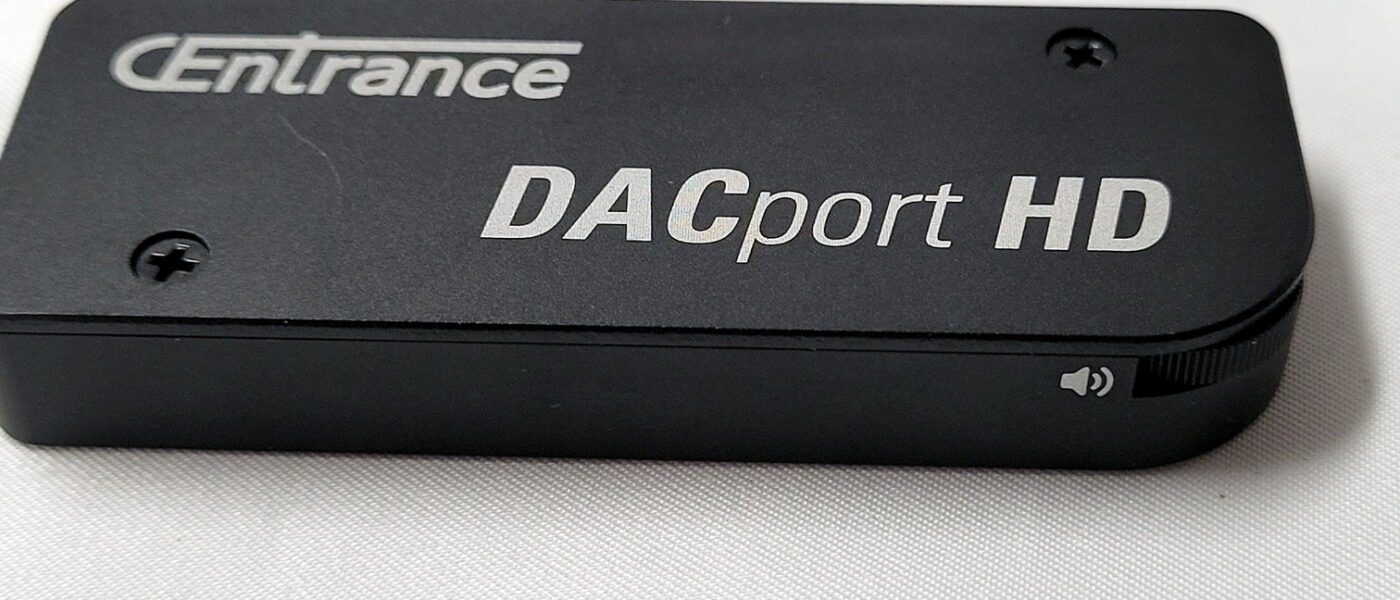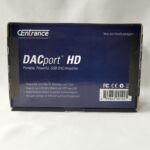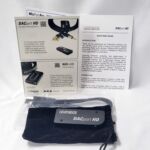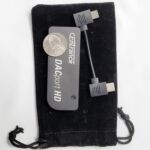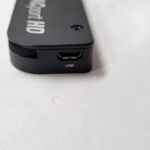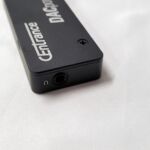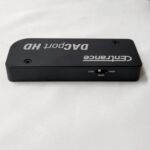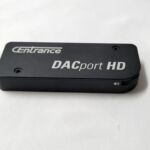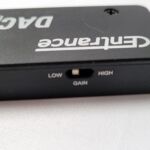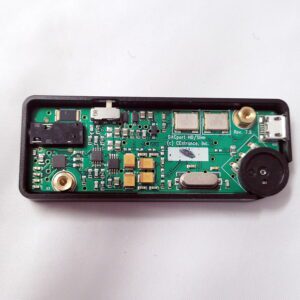QT – Centrance DACport HD
I’ve had several Centrance products in for review lately and the smallest of them is the Centrance DACPort HD. This is the latest iteration of the line of DACPort products that started back in 2009 and arguably started the dongle craze that continues today. All of the Centrance products reviewed have been loaners and were returned upon completion.
For those of you who don’t know Centrance, it was started by Michael Goodman, an Audio Engineer and instructor at Columbia College in Chicago in 2000. For the first several years, Centrance worked behind the scenes making audio interface components. If you’ve used a FireWire audio interface there is a good chance it had Centrance designed components in it. More recently Centrance began selling their own product line. My first introduction to Centrance was the MICPort Pro which turned any XLR mic into a USB microphone, and the AXEPort Pro which let me do the same for a guitar or bass and listen and record to my computer. When these two products came out, they were game changers and many are still in use today at recording studios around the world.
Then in 2009 Centrance introduced a product that would introduce them to the Audiophile market, the DACPort. The DACPort shared the same style and case as the AXEPort but was a complete USB DAC amp in a tube a few inches long. Centrance arguably created the first dongle DAC with the introduction of the DACPort. Since then Centrance has continued to improve both their pro-audio line and their playback line-up and the DACPort has gotten smaller and better along the way.
Unboxing / Packaging:
Build:
The current DACPort HD is a true dongle at 3x1x0.5 inches in size and 2.5 ounces. The shell is aluminum with a 3.5mm port at one end, a micro-USB port at the opposite. There is a volume wheel that straddles the side and the end next to the USB port and a recessed gain switch on the opposite side. That volume control is one of the reasons the DACPort HD is my pick for travel because it is one of a very few that truly independent of the source device and gives a level of control a lot of other dongles can’t match.
Internals:
Internally the DACPort HD uses asynchronous USB to feed an AK4490 DAC chip with its own custom designed clocking circuit to reduce jitter and noise. While many see the AK4490 as an entry level chip in today’s market, Centrance shows that DAC performance is as much or more about implementation as it is about the chip itself. Just about everything around the AK4490 chip was designed in-house and serves to improve the performance of the DACPort HD. The output of the DAC circuit feeds into their custom designed amplifier circuitry that allows for volume control at the device (completely independent of source volume) and offers enough power to drive most headphones. Total output power is 775mW into a 32Ω load and still nearly 40mW at 600Ω. Combine that with a THD+N of 0.002% and a 112db dynamic range and the little class A amplifier deserves the title AmpExtreme (Centrance trademarked name for it).
The DACPort HD supports 32/384kHz PCM and DSD128 but does not support MQA. One other thing to note is iPhone’s sometimes struggle with the DACPort HD due to its power consumption. I had no issue with current android phones other than it does cause some additional drain on the battery and will result in the phone needing to be recharged a bit more frequently.
Sound:
Sound wise, the little DACPort HD delivers the goods as it has a very linear, very clean sound without any added coloration and with good energy throughout the range. Bass has good power without losing impact on repeated hits or getting loose as tracks become faster and more complex. Mids have good texture and vocals cut through the instrumentation enough to be clear but not enough to sound like the two are standing apart from each other. Guitar has good growl as well with enough sharpness that the rasp sounds accurate. Cello has good timbre as do piano both are which are tough to do well.
Highs are well extended with good detail but again not emphasized above the rest of the signature. This gives the sound good linearity throughout the range and a very balanced overall tonality.
What isn’t captured in defining tonality is the dynamics and this is where the DACPort HD is at its finest. It has a nearly completely black background as even with songs paused and volume turned all the way up in android and on the physical control, there is only the faintest of hiss with the Andromeda that are known for being hyper-sensitive. This is impressive by itself but when combined with the fact that the DACPort HD can deliver an equally dynamic performance with the 600Ω DT990 plugged in, this is now in territory few dongles can tread in.
Thoughts / Conclusion:
When the DACPort HD first came out, it was marketed for PC and Mac users as most portable devices lacked the power to run it. This is a case of the market coming to it as increasing numbers of phones and tablets are now capable of providing more than enough power to drive most peripherals. iOS and iPad OS devices are still a potential exception as Apple still restricts the current draw on the Lightning port, but all of the android devices I tried with the DACPort HD worked swimmingly. It stands to reason that a Pro Audio outfit that just about invented the class of product should make a great one and the DACPort HD is still years after its intro one of the best sounding dongles on the market. Whether Centrance will update it again or will move onto other things now that the market is crowded with other DAC/Amps remains to be seen. If they do let it drop from the line-up it could end up like the AxePort and MICPort that sell for nearly as much on the used market as they did new. For now, Centrance is focusing on the new DAC Mini and Amp Mini models that are being displayed at CanJam Chicago this week so any updates or changes to the DACPort series will likely have to wait until that line is complete.

